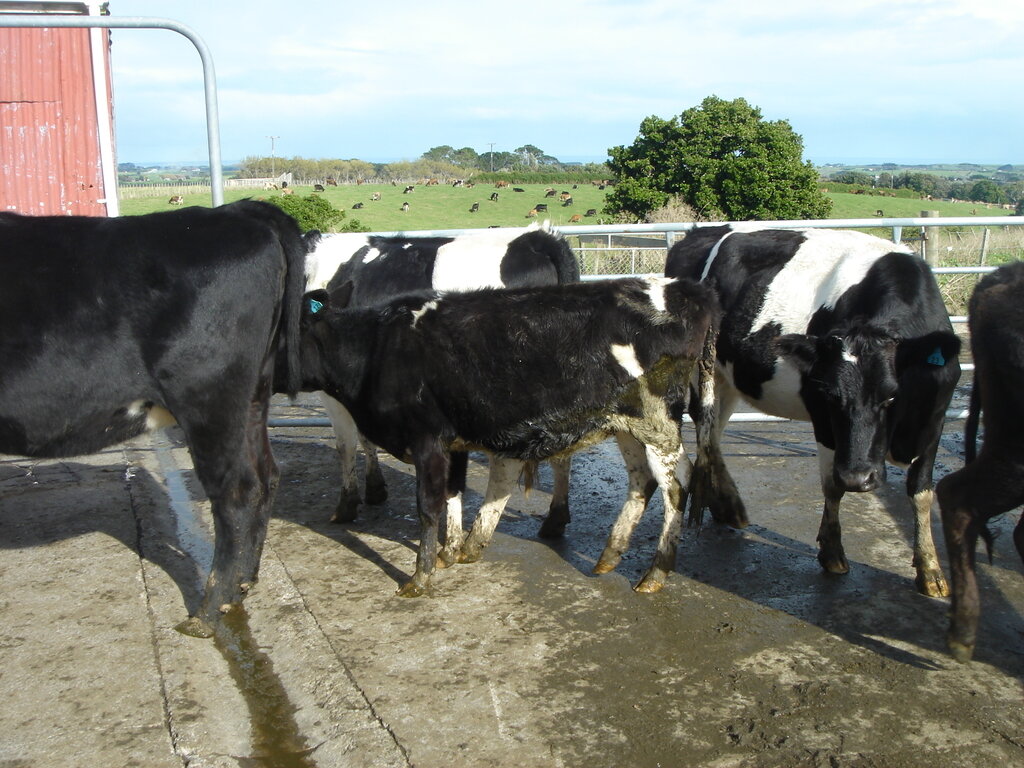
BVD Biology
Bovine Viral Diarrhoea (BVD) is an infectious viral disease that has been having significant impacts on the health, welfare, and production of New Zealand cattle since the early 1960s. Find out how persistently infected (PI) have kept the disease around for more than 60 years.
What is BVD virus?
Bovine viral diarrhoea (BVD) is a type of pestivirus that is closely related to the virus that causes Hairy Shaker Disease (also called Border Disease) in sheep. There are two main genotypes of BVD virus (BVDV-1 and BVDV-2) which can be further classified into sub-genotypes (a - u) based on the sequence of code in its viral genome (a single strand of RNA that is 12,500 letters long). The BVD virus is only 50 nm in diameter making it about 2,500 times smaller than the average human hair. The unique proteins and spikes on the surface of the BVD virus are what the immune system targets to destroy the virus.
What species does BVD infect?
BVD is primarily an infectious disease of cattle, but the virus can also infect sheep, goats, buffalo, deer, llamas, alpacas, and pigs. Although BVD can cause similar clinic signs in these other host species, it is not well adapted to them and so tends not to spread as effectively in these animal populations. There are no known health risks of BVD to people.
What happens when cattle get infected?
When cattle with no previous immunity against BVD (susceptible animals) become exposed to the virus either through direct contact with other infected animals or through indirect contact with objects that are contaminated with the virus, they develop short-lived infections (also called transient infections) that last for a period of 2 to 3 weeks. Animals will usually start producing antibodies against BVD within a few weeks which clears the virus from their system. Once animals have recovered, they generally stay immune to BVD for the rest of their lifetime. Calves that are born to dams that have either recovered from a natural BVD infection or have recently been vaccinated against BVD get protective antibodies through colostrum (maternal antibodies), which can stay in the blood for anywhere from 3 to 10 months. After this time, the calves become susceptible to transient infections with BVD.
The BVD virus likes to attack cells in the intestine, lymphoid tissue (the cells responsible for making white blood cells), and reproductive tract which can cause diarrhoea, immunosupression, and reduced fertility. Calves that are transiently infected with BVD are much more likely to get other gastrointestinal and respiratory disease. Most adult cattle will not show any obvious signs of being infected although they can still experience fever, poor appetite, depression, diarrhoea, nasal discharge, decreased milk production, and reduced fertility.
What happens when a fetus gets infected?
The most serious complications from BVD happen when susceptible dams are infected with BVD during pregnancy and the virus crosses the placenta to infect the developing fetus. The effects will depend on what body systems and structures the fetus is building at the time of infection.
Early pregnancy (Days 0 to 40)
The embryo is trying to implant on the uterine wall and develop a placenta. Infections with BVD during this stage of pregnancy may result in early embryonic death.
Mid-pregnancy (Days 40 to 120)
The fetus is laying the foundations for critical body systems including the immune system. Infections with BVD during this stage of pregnancy most often result in abortion. However, if the fetus survives, its immune system may not be able to recognise the virus as “foreign” and it can’t produce antibodies to clear the virus. These calves are born persistently infected (PI) with BVD and constantly shed very large amounts of virus through saliva, faeces, milk, semen, and other bodily fluids for the rest of their life.
Late pregnancy (Days 120 to 280)
The fetus is continuing to develop and refine the structure of each body system. Infections with BVD during this stage of pregnancy may results in stillbirths, birth defects, or calves that are born stunted and weak. These affected calves often have poor growth rates and difficulty reaching target weights by slaughter.
What are Persistently Infected (PI) animals?
Persistently infected (PI) cattle are the main reason why BVD has managed to stick around for so long in our cattle populations. These animals are constantly shedding large amounts of virus through every bodily fluid and so can easily infect hundreds of other cattle over their entire lifespan. PI calves will often be smaller than their herd mates and are much more likely to get sick from other diseases since the virus damages many parts of their body including the immune system. However, some PI animals can also look completely normal, which makes it difficult to accurately identify them without testing individual animals.
Most PI animals will either be culled for poor performance or die from the development of mucosal disease within their first two years of life. Mucosal disease occurs when PI animals become infected with a different strain of the BVD virus, which causes them to develop severe fever, lethargy, diarrhoea, and ulcers that rapidly progresses to death. Any PI heifers that survive long enough to calve will always give birth to PI calves. In herds that are actively infected with BVD, we expect fewer than 1 to 2% of animals to be PI. That means an infected herd with 500 breeding cattle may only have about 3 to 5 PI animals, but often that is all it takes to keep the virus circulating in the herd because of the large amount of virus they produce.
Check your understanding
Answer the questions below to check how well you understand the basics of BVD Biology.
Check Answer
The correct answer is (c).
Most ruminant species as well as pigs can all become infected with BVD although the infections tend be much milder. There have been reports of sheep developing persistent infections, which is a concern for BVD control in New Zealand with the number of farms that co-graze beef cattle with sheep.
Check Answer
The correct answer is (a).
An animal can only become persistently infected (PI) as the result of being infected as a fetus between days 40 to 120 of the pregnancy. This is when the immune system is still developing and it becomes unable to recognise the virus as a foreign invader.
Check Answer
The correct answer is (c).
Fetal infections during late pregnancy can result in serious birth defects like cataracts (cloudy eyes), cleft palates (deformed mouth), and hydrocephalus (enlarged head). Some calves may also be born stunted and weak with poor growth rates and performance over their lifespan.
Check Answer
The correct answer is (a).
Herds that are infected with BVD will usually have less than 1-2% of cattle that are persistently infected. However, these animals are responsible for most BVD spread within and between cattle herds.
Check Answer
The correct answer is (a).
Animals that are first infected with BVD after birth will develop an antibody response that prevents them from getting re-infected during their lifetime.










